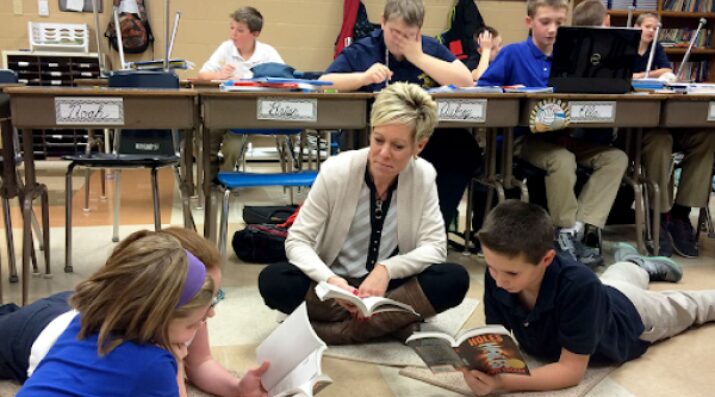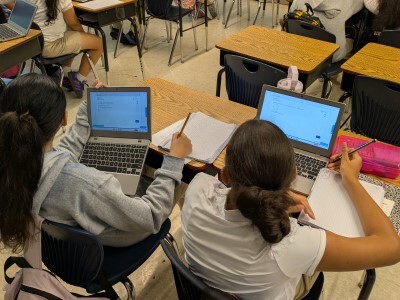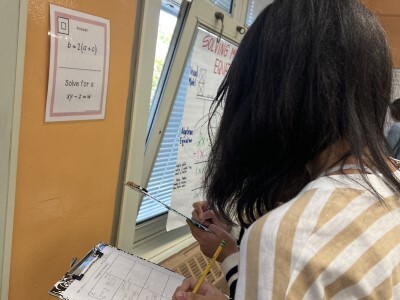My Students Aren't Lazy but Labeling Them Lazy Is
Topics

We’ve all had the experience of truly purposeful, authentic learning and know how valuable it is. Educators are taking the best of what we know about learning, student support, effective instruction, and interpersonal skill-building to completely reimagine schools so that students experience that kind of purposeful learning all day, every day.
Blended, self-paced learning can create time for teachers to move beyond shortcut labels to get to know students and their true potential for learning.
A recent opinion article for EducationWeek caught my eye: “Student Laziness Is a Myth. Here’s Why.” The author, Dr. Kyle Coppes, a secondary school principal at an international school in Germany, said that when teachers believe students are lazy, this is “a teacher’s get-out-of-jail-free card.”
How many times early in my teaching career did I grant myself this card? By justifying it was my students’ problem and not mine, I was not sharing the responsibility. It was all on them.
Twenty-six years later, I know there is so much more to the story than thinking a student is lazy. What factors shifted my thinking? First of all, I raised three sons, including a set of twins who had learning challenges. Secondly, I have taught language arts for 26 years spanning grades three through eight and have encountered all kinds of learners. Finally, I found the Modern Classroom Project which provided the final link that changed my perspective.
An important point Dr. Coppes wrote in his article is that “Our beliefs drive our behaviors.” Think about that for a moment. I sure did. On reflection, my beliefs and behaviors shifted not all at once but over time. Oh it took many years of parenting three sons, especially the ornery twins, and realizing how different my sons were academically. As the twins became older, and school became more difficult for them, I put into perspective how overwhelming school must have felt for them. The twins both had learning challenges. These challenges, at times, were disguised as laziness. It hit me one day: if I had to go to a place every day and do something I did not feel capable of doing, struggled to succeed, and did not enjoy, how would that make me feel?
For my sons and for some of my students every year, they were walking into a place that made them feel inadequate. The “jail cards” included the lazy students, the class clowns, the indifferent students, etc. When I stopped pulling out the jail cards for laziness or whatever else I thought it might be, and transferred the responsibility of getting to the bottom of why not all of my students were succeeding, the transformation began. I needed to make the effort to get to know each student and reach them so their real potential could be discovered and celebrated. This meant finding time to connect with who they really were.
And then three years ago I discovered the free online course for the Modern Classroom Project (MCP). MCP reminds me of another point that Dr. Coppes made about“the power of formative feedback” vs. “the teacher is the ultimate authority.” The concept of a classroom that included self-pacing, blended instruction, and mastery-based learning, like MCP’s model, helped me change my teaching to match my transformed beliefs about reaching students. Finally, I found a classroom structure that allowed my students to have some control in how they wanted to learn. Dr. Coppes argued that if a student is labeled “lazy” this “leaves no room for inquiry, no room to investigate, no room to discover what really may have gotten in the way of that student’s success.” This describes how Modern Classrooms provided me with the time to make these discoveries and really give formative feedback. Because my students self-pace, work toward mastery learning, and experience blended learning, I have essentially cloned myself in the classroom. I now have more time to find out who my students really are and how I can best help them. I can better understand students who appear to be quiet, lazy, obnoxious, bored, and all of the labels we teachers have assigned our students. With having more time to work one-on-one with my students, I know they are so much more than those labels.
It has been two years since I have restructured my classroom and became a Modern Classrooms teacher. It has been over one year since I became a Modern Classrooms mentor and have worked with teachers all over the United States as well as a teacher in Beirut and another in Greece. What have I discovered? We want the time to know our students. We want the framework that MCP and self-paced, blended, mastery-based learning provides. It solves many common teaching challenges so we can dig in and get to work to better plan and differentiate and celebrate the potential of all our students.
It has been an awesome journey and revelation as I stopped giving myself “get-out-of-jail-free cards.” Now, I give them to my students instead! They know that the work we do together matters most, and they are granted many chances to reach success.
Photo at top courtesy of the author.




